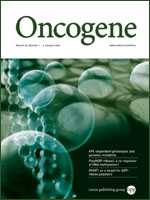Cancer Dis:间质干细胞通过PGE2信号推动癌症发展
2012-07-11 Beyond 生物谷
肿瘤相关基质细胞中的间质细胞对肿瘤细胞的生物学行为发挥至关重要作用。近日,Cancer Discovery杂志上刊登的一项最新研究重点研究了癌细胞与间质干细胞(MSCs)之间的相互作用,研究发现间质干细胞被招募到肿瘤基质中,一旦到达肿瘤基质就能够影响肿瘤细胞的表型。 肿瘤细胞来源的白细胞介素1(IL-1)诱导间充质干细胞分泌前列腺素E2(PGE2)。PGE2自分泌的方式运作配合旁分泌的IL-1信
肿瘤相关基质细胞中的间质细胞对肿瘤细胞的生物学行为发挥至关重要作用。近日,Cancer Discovery杂志上刊登的一项最新研究重点研究了癌细胞与间质干细胞(MSCs)之间的相互作用,研究发现间质干细胞被招募到肿瘤基质中,一旦到达肿瘤基质就能够影响肿瘤细胞的表型。
肿瘤细胞来源的白细胞介素1(IL-1)诱导间充质干细胞分泌前列腺素E2(PGE2)。PGE2自分泌的方式运作配合旁分泌的IL-1信号诱发间充质干细胞大量细胞因子的表达。
PGE2及细胞因子然后以旁分泌的方式作用于肿瘤细胞,诱导β-catenin信号的激活以及癌症干细胞的形成。这些现象表明骨髓间充质干细胞及其衍生细胞类型通过PGE2及细胞因子的释放创建出一个癌症干细胞微环境促使肿瘤向前发展。

doi:10.1158/2159-8290.CD-12-0101
PMC:
PMID:
Cancer-stimulated mesenchymal stem cells create a carcinoma stem-cell niche via Prostaglandin E2 signaling
Hua-Jung Li1, Ferenc Reinhardt2, Harvey R. Herschman3 and Robert A Weinberg2
Mesenchymal cells of the tumor-associated stroma are critical determinants of carcinoma cell behavior. We focus here on interactions of carcinoma cells with mesenchymal stem cells (MSCs), which are recruited to the tumor stroma and, once present, are able to influence the phenotype of the carcinoma cells. We find that carcinoma cell-derived interleukin-1 (IL-1) induces prostaglandin E2 (PGE2) secretion by MSCs. The resulting PGE2 operates in an autocrine manner, cooperating with ongoing paracrine IL-1 signaling, to induce expression of a group of cytokines by the MSCs. The PGE2 and cytokines then proceed to act in a paracrine fashion on the carcinoma cells to induce activation of β-catenin signaling and formation of cancer stem cells. These observations indicate that MSCs and derived cell types create a cancer stem-cell niche to enable tumor progression via release of PGE2 and cytokines.
本网站所有内容来源注明为“梅斯医学”或“MedSci原创”的文字、图片和音视频资料,版权均属于梅斯医学所有。非经授权,任何媒体、网站或个人不得转载,授权转载时须注明来源为“梅斯医学”。其它来源的文章系转载文章,或“梅斯号”自媒体发布的文章,仅系出于传递更多信息之目的,本站仅负责审核内容合规,其内容不代表本站立场,本站不负责内容的准确性和版权。如果存在侵权、或不希望被转载的媒体或个人可与我们联系,我们将立即进行删除处理。
在此留言














#PGE2#
37
#Dis#
37
#间质干细胞#
38